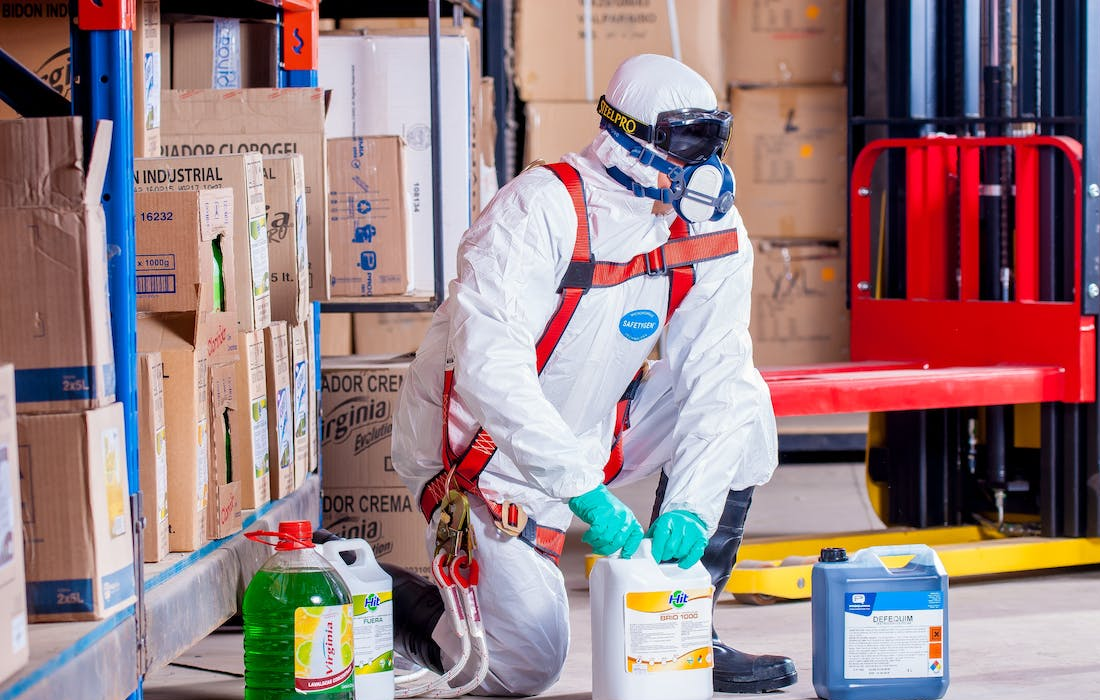Regenerative Medicine News and General Information
Chemical Exposure May Raise Parkinson’s Risk
Two years of heavy exposure to TCE, a liquid chemical that lingers in the air, water and soil, may increase the risk of Parkinson’s disease by 70%.
Previous research has linked TCE, or trichloroethylene, to certain cancers, but a new study publishing in JAMA Neurology on May 15, 2023, is believed to be the first large-scale study to demonstrate its association with Parkinson’s.
TCE has been used for industrial and commercial purposes for nearly 100 years, and was used as a surgical anesthetic until it was banned in 1977. More recently it was used as a degreasing solvent. Today, it is primarily used to degrease industrial metal parts. This entails heating TCE in degreasing tanks to create a vapor that dissolves the grease, but it also releases the chemical into the atmosphere. Once TCE enters the soil or groundwater, it can persist for decades.
In the study, researchers led by UC San Francisco and the San Francisco VA Medical Center, compared Parkinson’s diagnoses in approximately 160,000 Navy and Marine veterans. Just over half came from Camp Lejeune in North Carolina, where TCE was used to degrease military equipment and water was contaminated; the remainder came from Camp Pendleton in California, where the water was not contaminated.
Service members spent at least three months in the camps between 1975 to 1985, a period when TCE in the water at Camp Lejeune exceeded maximum safety levels by 70-fold. The researchers had access to follow-up health data on the service members between 1997 and 2021, by which time Parkinson’s might be expected to develop.
Researchers found that 430 veterans had been diagnosed with Parkinson’s, and that the Lejeune veterans’ risk was 70% higher than the Pendleton veterans. On average, service members of both camps were stationed there approximately two years from 1975 to 1985. Residence began at an average age of 20, and Parkinson’s diagnosis occurred at an average age of 54 at Lejeune and 53 at Pendleton, showing that the disease took decades to develop after TCE exposure.
The civilian population is also at risk of TCE exposure, said first author Samuel M. Goldman, MD, MPH, of the UCSF Division of Occupational, Environmental and Climate Medicine, and the SFVA, noting that between 9% and 34% of U.S. water supplies contain measurable amounts of the chemical.
TCE Production Has Increased
“TCE is still a very commonly used chemical in the United States and throughout the world. Its production has been increasing over the past several years and it is widely available online,” he said.
“Unfortunately, there’s no easy way to know if you’ve been exposed, unless you’ve worked with it directly. Many of us have detectable levels of TCE in our bodies, but it gets metabolized and excreted very quickly, so blood and urine tests only reflect very recent exposure.”
Additionally, the researchers found that the Lejeune veterans had a higher prevalence of prodromal Parkinson’s — symptoms that are suggestive of Parkinson’s but do not yet fulfill diagnostic criteria for the disease.
“Loss of sense of smell, a sleep disorder known as RBD, anxiety, depression and constipation can be early signs of Parkinson’s, but only a very small fraction of people with them will develop it,” said senior author Caroline M. Tanner, MD, PhD, of the UCSF Department of Neurology, the Weill Institute for Neurosciences and the SFVA.
“The risk of developing Parkinson’s in the future can be estimated using a risk score based on these symptoms. The Lejeune veterans had higher risk scores than the Pendleton veterans, suggesting that they are more likely to develop Parkinson’s in the future.”
Sources:
Samuel M. Goldman, Frances M. Weaver, Kevin T. Stroupe, Lishan Cao, Beverly Gonzalez, Kalea Colletta, Ethan G. Brown, Caroline M. Tanner. Risk of Parkinson Disease Among Service Members at Marine Corps Base Camp Lejeune. JAMA Neurology, 2023; DOI: 10.1001/jamaneurol.2023.1168
University of California – San Francisco. (2023, May 16). Chemical exposure may raise your risk for Parkinson’s: Symptoms take decades to develop, UCSF-SFVA led study shows. ScienceDaily. Retrieved May 19, 2023 from www.sciencedaily.com/releases/2023/05/230516115542.htm
Photo by Pixabay from Pexels: https://www.pexels.com/photo/action-adult-boots-boxes-209230/

